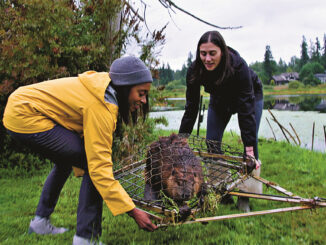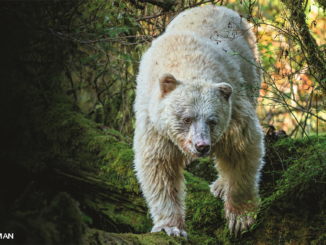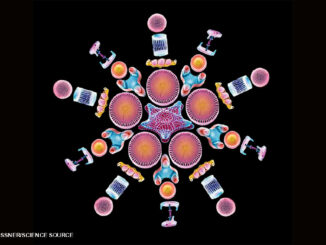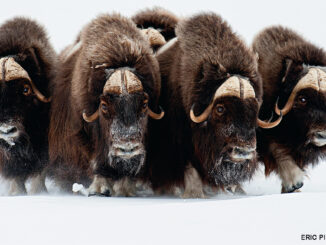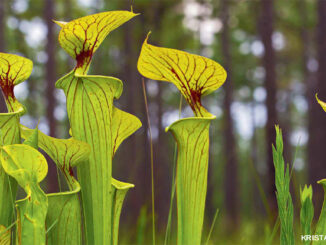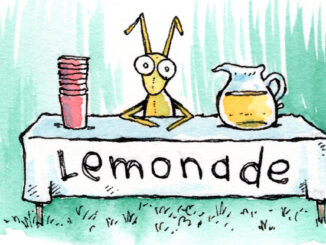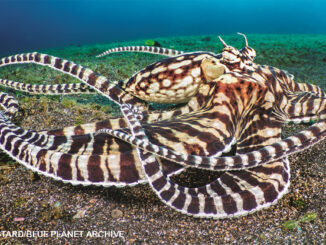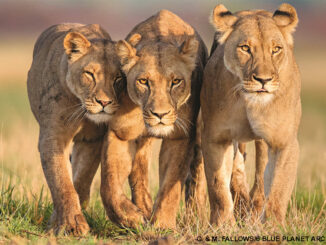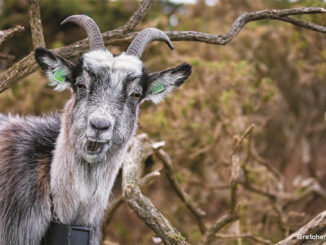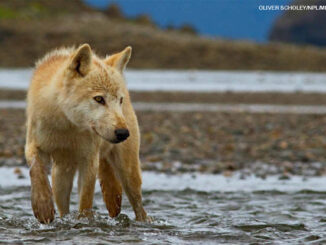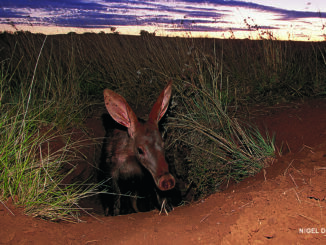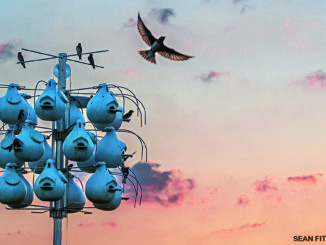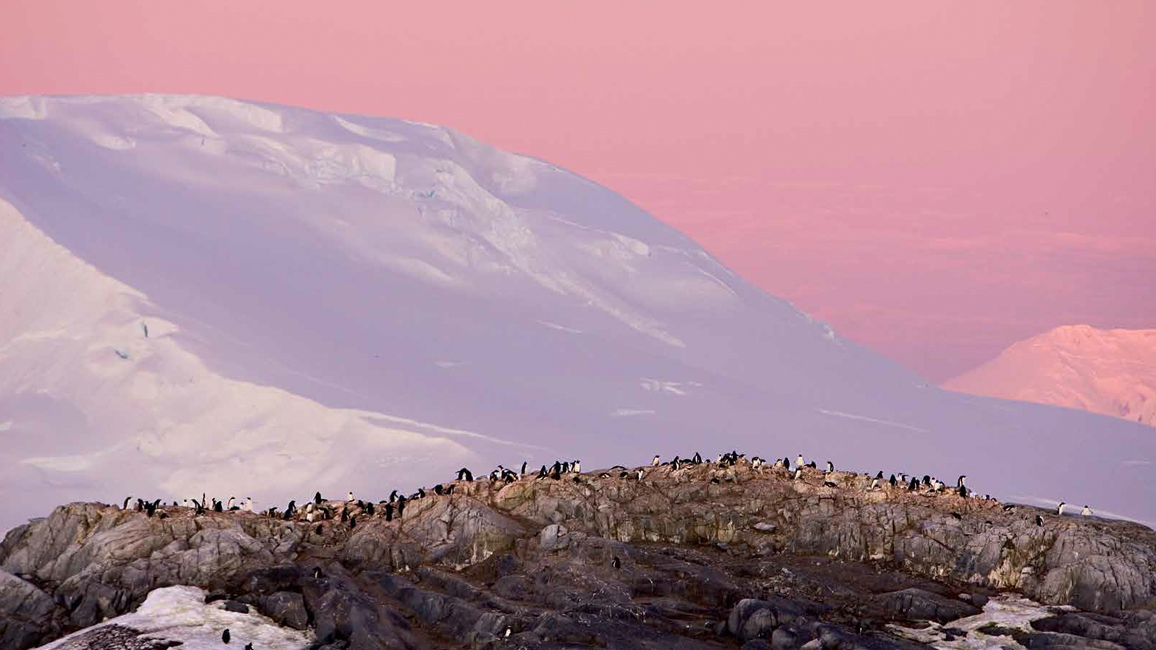
Ends of the Earth
By Ellen LambethBrrrr, the North and South poles are as far as you can get from the sun’s direct rays. Even so, there’s plenty of life around these kingdoms of ice.

FAST FACT: In the polar summer, the sun never sets. It stays light all day—and all night!
FAST FACT: The polar winter sun never rises. Daytime is just a faint glow in the sky.
Each year, the ARCTIC TERN flies from pole to pole and back again. During its journey, it wanders over 43,000 miles!
HUMPBACK WHALES mate and give birth in warm tropical waters during the winter. Then they migrate toward either pole for summer feeding.
The North Pole is at the very top of the world, but there’s no land there. Most of the area above the Arctic Circle is frozen ocean, called sea ice or pack ice. At the edges of this solid ice are floating chunks called floes (FLOWS) and slushy seas, as you can see above.
But the Arctic also includes most of the island nation of Greenland, as well as land in northern parts of Europe, Asia, and North America. The Far North of Canada and Alaska are in the Arctic.
FAST FACT: People of many different cultures live in Arctic regions.
FAST FACT: Polar bears hunt seals from the sea ice. But global warming is melting the Arctic sea ice.
The REINDEER (bottom right photo) is more at home on the tundra than on a rooftop with Rudolph! He’s a male, but the females have antlers, too. In North America, this wild animal is called a CARIBOU (KAIR-uh-boo).
Powerful POLAR BEARS rule the Arctic. Before winter, this mother bear (middle photo above) made a den in the snow where she gave birth to her two cubs. Now that it’s spring, the cubs follow her and learn how to hunt seals and survive life on the ice.
The treeless Arctic landscape, called TUNDRA, has a layer of permanently frozen soil just below a warmer surface layer. On top the land is flat and covered with lichens, mosses, grasses, and shrubs. Here (top photo) the tundra seems to glow with autumn color.
In the Arctic summer, the land bustles with wildlife. Many kinds of birds migrate here to breed. Hoofed mammals find easy grazing. Small mammals raise lots of babies. And wolves, foxes, and bears are on the hunt. The Arctic Ocean teems with whales, seals, and many other sea creatures.
FAST FACT: Arctic temperatures average about -30°F in winter. Summer temperatures can soar to 60°F or more!
A majestic SNOWY OWL (bottom photo) is about to grab a furry little rodent called a LEMMING in its powerful talons (claws). In years when lemmings aren’t so plentiful, the owls may wander way below the Arctic Circle in search of food.
The coat on this young ARCTIC FOX (above left) is changing from summer brown to winter white. That way, the fox blends in as it hunts—in any season. Foxes eat whatever they find or catch. They often follow polar bears, hoping to snatch some scraps from their meals.
With thick skulls, sharp horns, and shaggy coats, MUSK OXEN (top right photo) form a mighty wall! They often protect their calves this way against wolves and other predators. The “wall” also shields the little ones from cold, bitter winds.
A thick layer of fat called blubber helps keep a WALRUS warm in cold Arctic waters. This watchful mother (middle right photo) must defend herself and her calf against hungry polar bears and killer whales.
At the “bottom” of the world is a whole continent called Antarctica. It’s the only land mass inside the Antarctic Circle. Most of Antarctica is covered by a thick layer of ice. A range of mountains divides the continent, and even most of that is under ice.
Believe it or not, very little moisture from the sky falls here, so you can truthfully call the landscape a desert. Most of the snow that does fall never goes away. It sticks around year after year, piling up to make the ice sheet thicker and thicker.
FAST FACT: Antarctica is the coldest and windiest spot on Earth.
The WEDDELL SEAL (top photo) lives farther south than any other mammal. Weddell seals swim under the sea ice to feed—mostly on fish and squid. They can dive a half-mile deep and stay underwater for more than an hour. This one has hauled out onto the ice to rest.
Antarctica is home to several kinds of penguins, including the world’s largest: EMPEROR PENGUINS. The females lay their single eggs and head to the sea. The males stay out in the open through the harsh, dark winter, balancing the eggs on their feet and under their feathers. When the females return in spring, the moms and dads take turns caring for the fuzzy chicks.
FAST FACT: Antarctica claims the lowest temperature ever recorded on Earth: -129°F.
In some places in the Antarctic mountains, rocky areas stick out above the ice. These are called nunataks, and the SNOW PETREL uses them for nesting. Snow petrels breed farther south than any other bird.
Most life in Antarctica is at the edges and in the surrounding ocean. There’s not much plant life—mostly lichens, mosses, and algae growing on rocky surfaces. The biggest Antarctic animal that lives its entire life on land is a tiny wingless fly. It can freeze solid and still survive.
HUMPBACK WHALES in Antarctica eat mostly shrimp-like creatures called KRILL. These whales (middle photo) swam underneath a mass of krill, blowing bubbles as they spiraled upward. The bubbles forced the krill closer together. Now, with jaws open, the whales are scooping up the krill as they reach the surface.
FAST FACT: Nearly three-fourths of the world’s fresh water is in the sheet of ice that covers Antarctica.
Like its namesake, the LEOPARD SEAL (bottom left photo) is a spotted and fearsome hunter. Penguins and other seals try to avoid this big, toothy predator. But leopard seals also eat fish, squid, and a lot of krill.
FAST FACT: No people live permanently in Antarctica—only visiting scientists, explorers, and tourists.
Ice-free blood allows the ICEFISH (bottom right photo) to survive in the frigid ocean around Antarctica. It appears pale and ghost-like. Even its blood is colorless.
FAST FACT: The Antarctic wind is almost always blowing—sometimes at 100 to 200 miles per hour.
Under the ice are colorful ANTARCTIC SEA STARS and ANTARCTIC SEA URCHINS. The urchins scour the sea floor, grazing on algae and other stuff, including seal poop. The sea stars eat all that and anything else they can find, living or dead. They even attack the urchins, as you can see here.
“Ends of the Earth” originally appeared in the December/January 2014 issue of Ranger Rick magazine.
(Click on each image above for a closer view of the story.)






